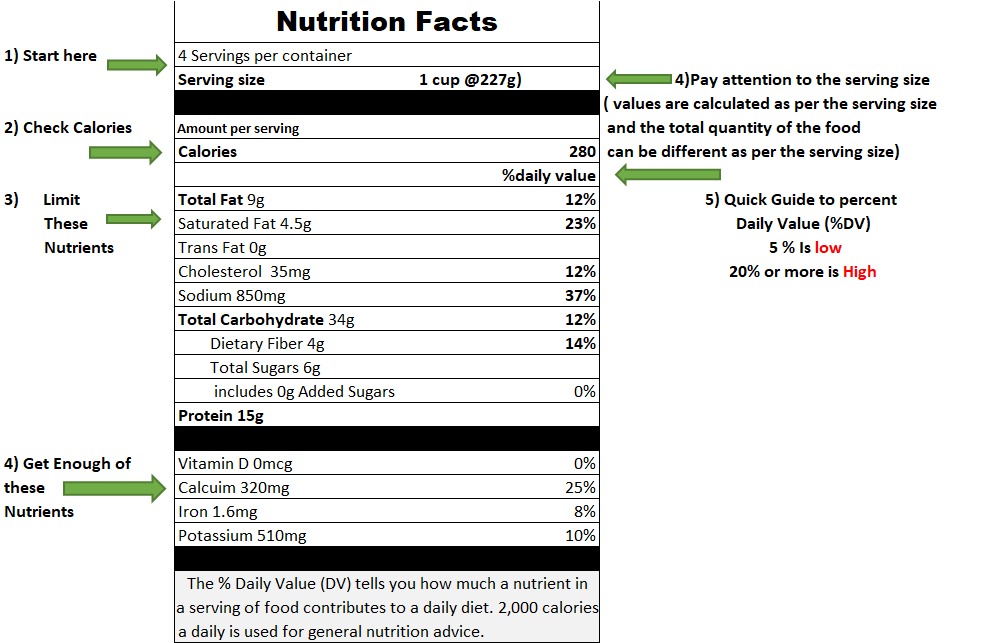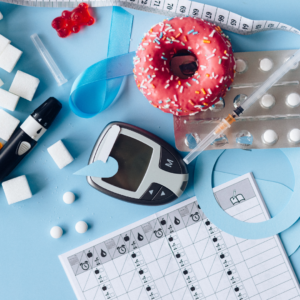There are two sides to every product packaging – the front speaks volumes of the brand and the product, with a touch of eye-pleasing designs; the other one is printed with minuscule words that specify nutritional values and the ingredients present in the product. It also features a little product description, the number of ingredients along with their exact calorie counts.
This information, although presented in an organised way, is not always easy to decipher unless you know how to read it well. Knowing how to read the product labels accurately can make it easier to look for any hidden ingredients and determine exact product calorie counts.
1. Check The Serving Sizes:
- Total product quantity is mentioned in serving size.
- Per serving size helps one understand the exact calculation of each serving specifically. It does not apply to the total product quantity.
- Per serving size are usually less in quantity than a person would consume at a time. This makes the calories and sugars of the serving size seem lesser, falsely convincing people that they are consuming fewer calories.
- To understand the exact nutritional value of a consumed food item one can multiply the values on the label per serving size with the amount of serving size that was consumed.
2. Reading The Ingredient List:
- The ingredients are listed – starting from the highest quantity to the lowest quantity of the ingredient in the product.
- It is important to check the first few ingredients as they make up most of what the product contains.
- Ingredients like artificial sweeteners are not mentioned in the nutrition labels as they do not contain calories. They may be mentioned in the footnote.
3. Nutrient Content:
It is important to understand the nutrient value mentioned per serving or for the total product, or as per 100 gms (reference number for calculation).
- Sugars: Not many consumers are familiar with the fact that there are many types of sugars out there. The different kinds of sugars added to one product are mentioned at the end of the ingredients list or in the footnote. The healthiest ones will be mentioned in the beginning. The other names used instead of mentioning the term ‘sugar’ are high fructose corn syrup, maple syrup, rice bran syrup, fructose, maltose, sucrose, dextrose, maltodextrin, brown sugar, cane sugar.
- Fats: The amount of fats in the products can be divided into various groups as per their characteristics/nature. The types are monounsaturated (MUFA), polyunsaturated (PUFA), saturated fats, trans fats, and even cholesterol.
-Fats that are mostly used for the products are saturated fats and trans fats.
-This is not mentioned in many products.
-Almost all packaged foods have trans fats.
-It is important to check the cholesterol levels.
-Look for terms like partially hydrogenated to check the amount of trans fat. - Protein & Fibre: Protein and fibre values are calculated from the serving value. A good amount of protein & fibre is an ideal pick.

Nutrients/Ingredients To Avoid
Always choose products that are low in refined flour, saturated fats, trans fats, high sodium, and sugars. Limit products that have a high number of preservatives, guar gum, and artificial colouring. For example, types of salts including sodium chloride, sodium benzoate, nitrates, and phosphates are used to extend shelf life, preserve moisture or colour and enhance flavour.
Opt for products that have more vitamins, minerals, and proteins. It is important to compare the products according to the nutrients they provide if consumed in a similar quantity.
Simple Tricks To Identify Healthy & Unhealthy Foods
-Refer to these simple examples to judge the health standard of the product
-Select food containing more than 6g of fibre per 100g
-Select food containing less than 5g of fat per 100g
-Limit selecting food containing more than 10g fat per 100g
-Select food containing less than 5g of sugar per 100g
Some food labels use red, amber and green colour coding which makes it easier to choose food that is lower in total fat, saturated fat, sugar and salt. Choose more ’greens’, ’ambers’ and fewer ‘reds’. When it comes to studying food products correctly, there are several factors to be considered. However, you can always bank on the professionals to help you with choosing the right foods that will best benefit your mind, body and soul.
A professional nutritionist and dietician can help you with figuring out the right weight loss diet for you. If you have been looking for an expert ‘nutritionist near me’, your best bet is Natasha Kanade, founder of www.transformwithnatasha.com, a dietitian & nutritionist in Mumbai. With tailored Weight Management and Lifestyle Management programs, she can provide you with simple weight loss tips. Ready to revel in wellness? Get in touch with us today!







